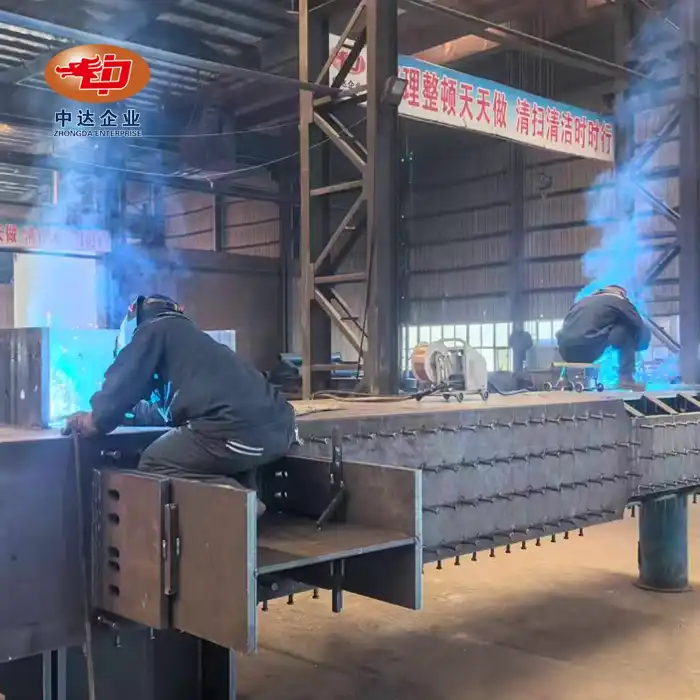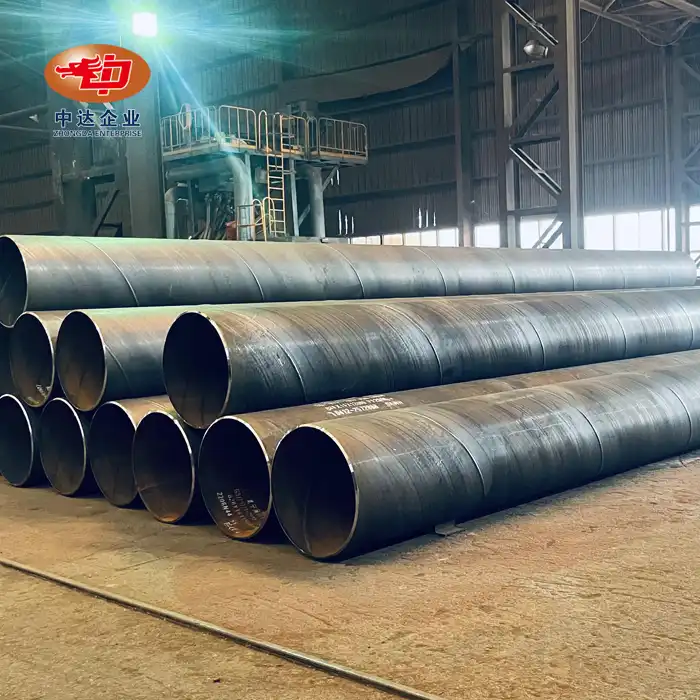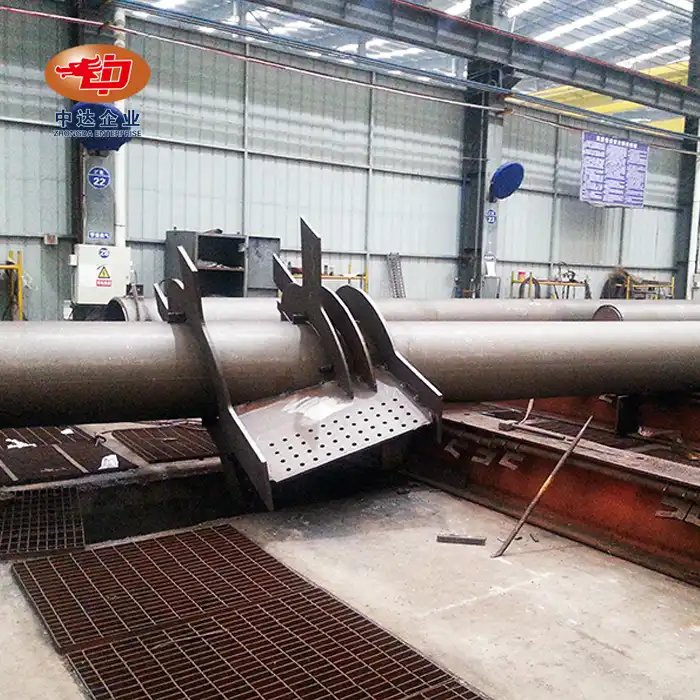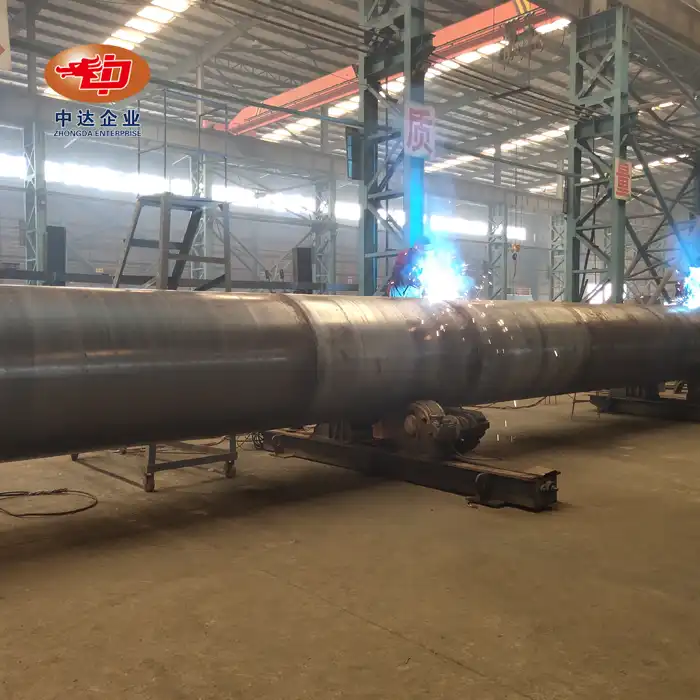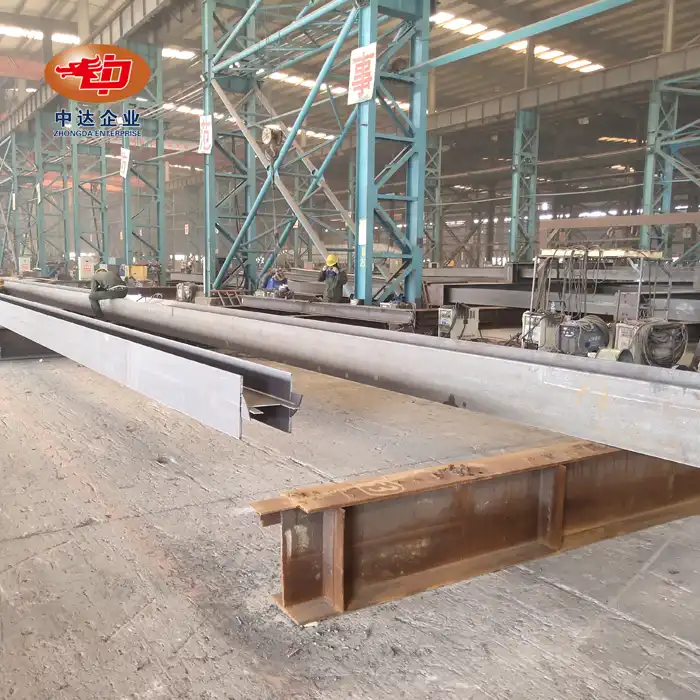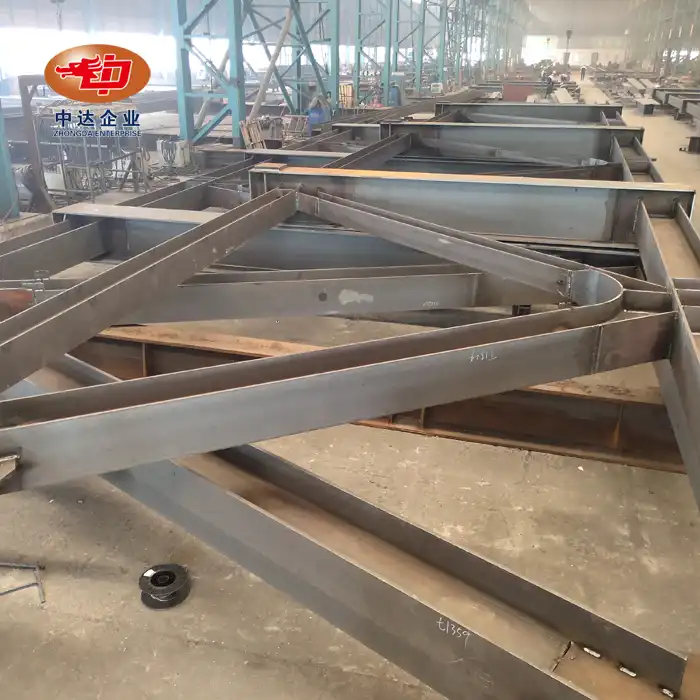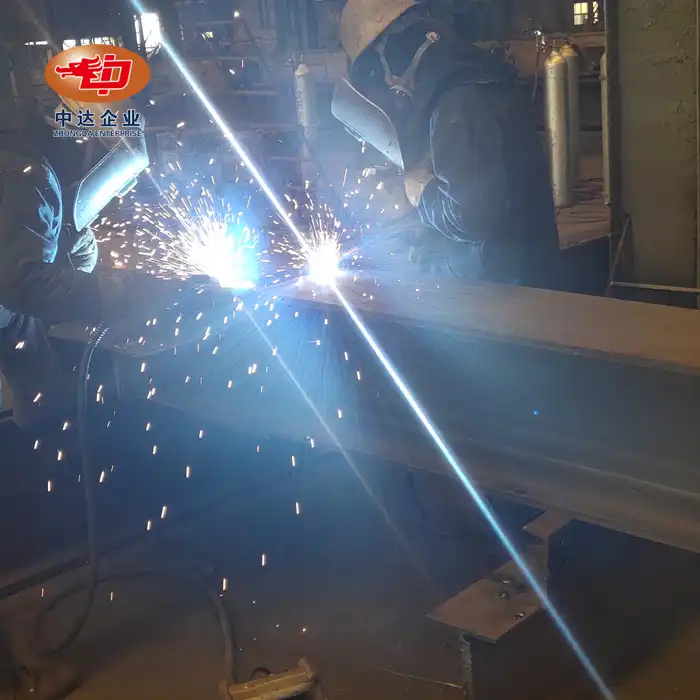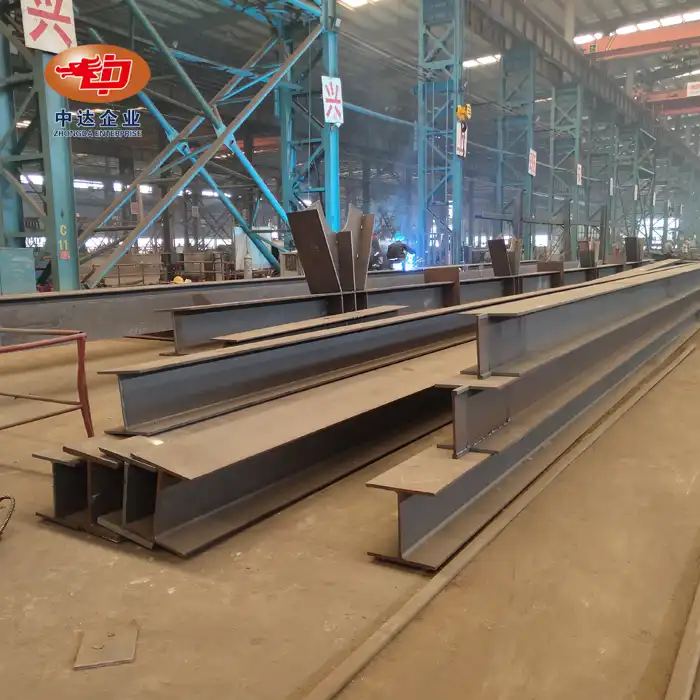Material Specifications and Quality Control
Steel Grade Selection
Selecting the appropriate steel grade is critical in designing durable and reliable truss bridges. High-strength low-alloy (HSLA) steels, such as ASTM A709 Grade 50 or 70, are widely preferred for their excellent strength-to-weight ratios and enhanced corrosion resistance. These grades also offer superior weldability and toughness, essential for withstanding dynamic loads and environmental stressors over time. Zhongda Steel's precision ultra-thick plate cutting, accurate to ±0.2mm, guarantees that these stringent material specifications are consistently achieved, ensuring structural safety and performance.
Weathering Steel Technology
For truss bridges located in demanding environments, weathering steel technology provides significant benefits. Zhongda Steel's -60°C Weathering Steel Anti-corrosion Technology offers outstanding resistance to extreme weather conditions, particularly in Arctic or similarly harsh climates. This technology enables the formation of a stable, protective patina on the steel surface, which greatly reduces corrosion and maintenance needs. The result is an extended service life and enhanced durability, making this approach ideal for infrastructure projects requiring long-term resilience in challenging environments.
Quality Assurance Protocols
Maintaining strict quality assurance throughout the manufacturing process is vital for ensuring the reliability of steel truss bridges. Advanced non-destructive testing (NDT) methods, including ultrasonic testing and magnetic particle inspection, are utilized to identify potential defects in steel components before assembly. Zhongda Steel's adherence to ISO 9001 standards and compliance with EN 1090 regulations guarantees that every structural element meets rigorous quality benchmarks. This comprehensive quality control framework provides engineers and project managers with confidence in the bridge's safety and longevity.
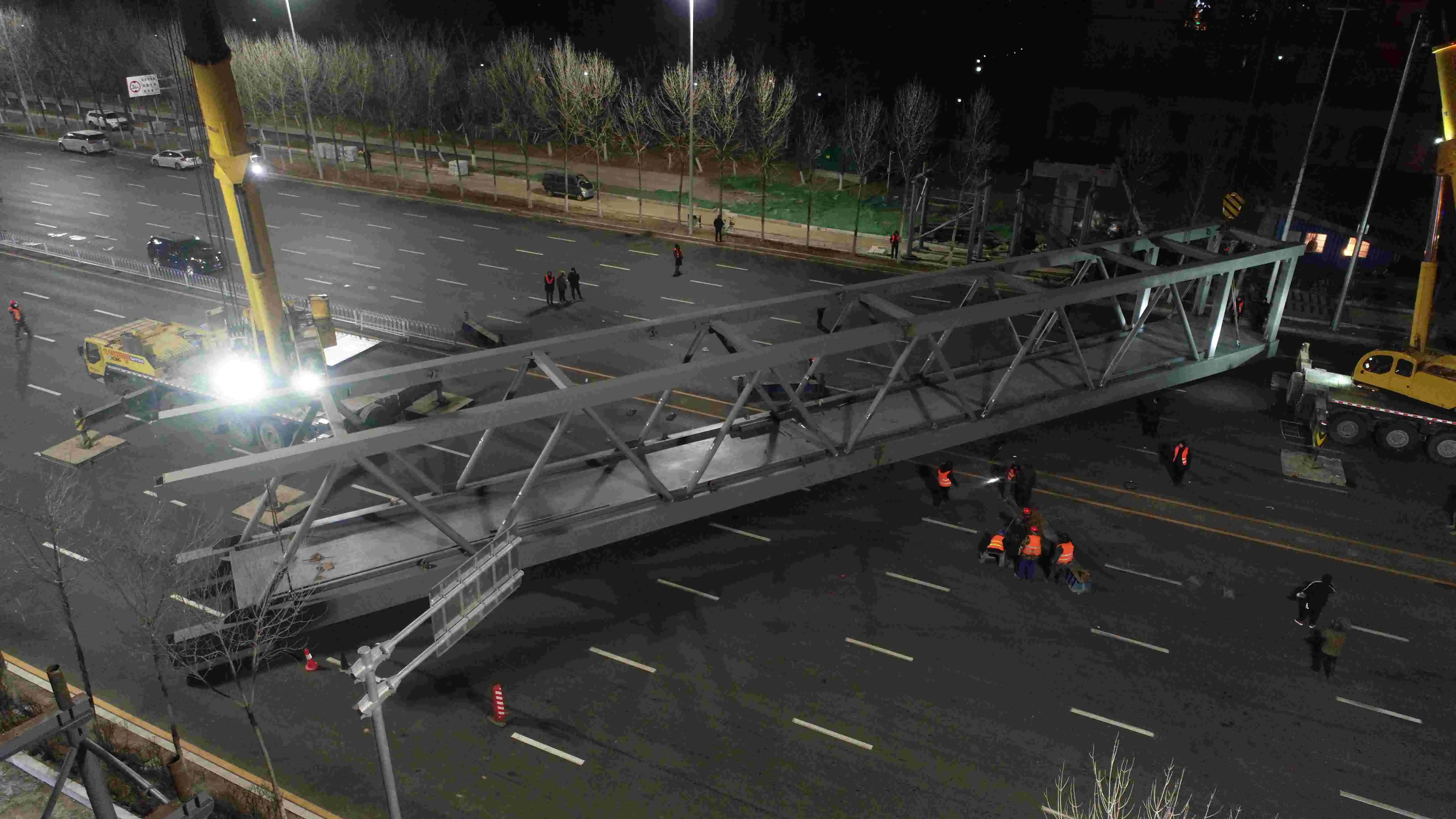
Load Considerations and Structural Analysis
Dead and Live Load Calculations
Accurate load calculations form the foundation of steel truss bridge design. Dead loads, including the weight of the structure itself and permanent fixtures, must be precisely determined. Live loads, such as traffic, pedestrians, and wind forces, require careful consideration of local conditions and anticipated usage patterns. Advanced software tools, integrated with Building Information Modeling (BIM), allow for precise load simulations and optimizations.
Dynamic Load Analysis
Steel truss bridges must withstand various dynamic loads, including seismic activity, wind-induced vibrations, and vehicle-induced oscillations. Finite Element Analysis (FEA) and advanced computational fluid dynamics (CFD) simulations are employed to assess the bridge's response to these dynamic forces. Zhongda Steel's expertise in BIM-driven prefabrication enables the integration of these analyses into the design process, ensuring optimal performance under diverse loading conditions.
Fatigue and Fracture Considerations
Long-term durability is a critical aspect of truss bridge design. Fatigue analysis focuses on identifying potential stress concentration points and designing connections that minimize the risk of crack initiation and propagation. Fracture-critical members require special attention, with stringent material toughness requirements and redundancy in design. Zhongda Steel's experience in delivering bridges for extreme environments, such as those in Russia, demonstrates our commitment to creating structures that excel in fatigue resistance and long-term reliability.
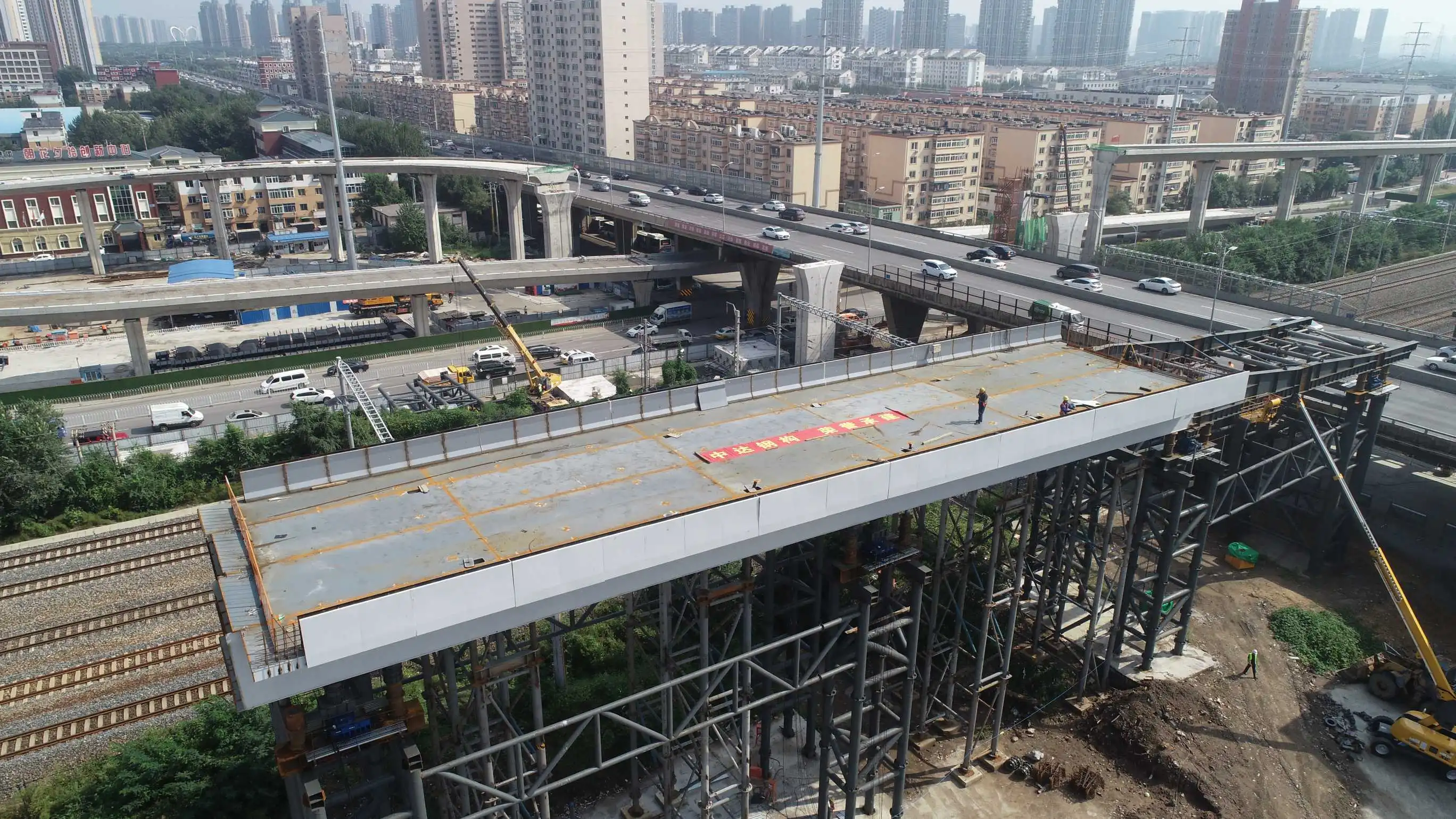
Fabrication and Erection Standards
Precision Fabrication Techniques
The fabrication of steel truss bridge components demands exceptional precision. Computer Numerical Control (CNC) machining and robotics-assisted welding ensure dimensional accuracy and consistent weld quality. Zhongda Steel's 120,000 m2 modern facility, equipped with state-of-the-art technology, allows for the fabrication of complex truss elements with unparalleled accuracy. This precision is crucial for ensuring proper fit-up during on-site assembly, reducing construction time and minimizing potential issues.
Connection Design and Detailing
Connections are critical in steel truss bridges, serving as the joints that transfer loads between members. Bolted connections must adhere to standards such as ASTM F3125 for high-strength bolts, while welded connections require careful design and execution to prevent fatigue issues. Zhongda Steel's expertise in connection detailing, honed through projects for global clients like BMW and China Railway, ensures that every joint is optimized for strength, durability, and ease of assembly.
Erection Sequence and Temporary Support
The erection of steel truss bridges requires meticulous planning and execution. Detailed erection sequences must be developed, considering temporary support structures, lifting equipment capacities, and site constraints. BIM technology plays a crucial role in visualizing and optimizing the erection process, identifying potential clashes or issues before they arise on-site. Zhongda Steel's experience in delivering complex industrial hubs in Vietnam showcases our ability to manage intricate erection processes efficiently and safely.
Conclusion
Designing steel truss bridges requires a comprehensive understanding of material properties, load dynamics, and fabrication techniques. Adhering to rigorous design standards ensures the creation of safe, durable, and efficient structures that can span great distances and withstand the test of time. By leveraging advanced technologies and expert knowledge, engineers can push the boundaries of what's possible in steel truss bridge design, creating iconic structures that serve communities for generations to come.
Contact Us
For unparalleled expertise in steel truss bridge design and fabrication, turn to Zhongda Steel. Our globally certified precision steel solutions, coupled with innovative technologies like BIM-driven prefabrication and -60°C Weathering Steel Anti-corrosion Technology, ensure your project's success. From Arctic bridges to industrial hubs, we deliver engineering excellence with worldwide impact. Contact us at Ava@zd-steels.com to discuss how we can bring your steel truss bridge vision to life with uncompromising quality and innovation.











